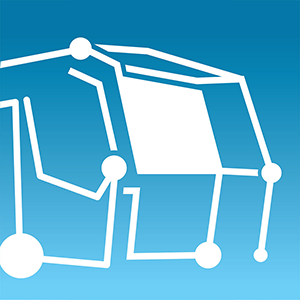
The Czech Republic is an important European transit country both for passenger and freight traffic. To ensure safe high-capacity rail traffic, the railway system must meet ever-increasing requirements. Highly wear-resistant rails are increasingly being used on Czech railway lines to extend the service life of rails and improve their resistance to the formation of cracks. However, the continuous welded track is also crucial for this system.
Pirell, a Czech private company, has many years of experience in rail welding. To meet the railway’s high quality requirements, it invested in a mobile flash-butt welding machine.
Capable of welding highly wear-resistant rails and performing closure welding without an additional rail-pulling device, the APT 1500 RL offers some advantages.
Compliance with strict European standards ensures that the required welding quality is achieved. Apart from an increased geometry accuracy after welding, the welding robot certified as per EN 14587-2 also fulfils a higher fracture and fatigue strength and the conditions for the welding sequence. There is no need to manually align the rail ends due to the fully automatic alignment process of the rail. This results in a highly reproducible welding quality. These advantages offered by the APT 1500 RL have convinced the customer of our product.
GTC, a wholly owned Lithuanian Railway subsidiary, is specialised in the construction and renewal of railway lines. In general, two rail welding methods are used in Lithuania: alumino-thermic welding, also known as thermite welding, and stationary flash-butt welding.
The first method uses filler material to join the rail joints and was carried out directly on the track. In recent years, the Baltic region was exposed to large temperature fluctuations that led to an increase in weld fractures. Therefore, the decision was taken to use a mobile flash-butt welding machine that can also be used directly on the track to achieve a welding quality that is as uniform as possible over the entire length of the rails.
The use of rectified alternating current enables highly efficient welding performances and produces welds with optimum metallurgical qualities. Thanks to its special design and compliance with the weight limit of 32 t, the welding vehicle has been approved for European road use without any restriction. The flexibility achieved by the machine concept, resulting savings in costs and time during transfer travel, and the high welding quality have convinced the customer to invest in a mobile flash-butt welding machine made by Plasser & Theurer.
Since July 2015, the APT 1500 RL has been used on Europe’s largest construction project “Crossrail” in the heart of London. Under difficult conditions (tight clearance gauge, works in tunnels, tight schedule) it joins the rails using the flash-butt welding process following laying.
In addition to ensuring the highest welding quality (metallurgic and geometric approval as per European standard EN 14587-2, fulfilling particularly restrictive geometrical criteria for “category 5”), the machine stands out due to its flexible application.
The distance between the individual work sections of the Crossrail project can easily be managed as the machine is suited for transport by road (total weight of less than 32 t, the vehicle can be approved as a lorry for road traffic without restrictions). On track, the APT 1500 RL runs on a lowered rail chassis. Should the machine hinder construction vehicles on track, it can be removed from the track within minutes.
The short cycle time of about two minutes combined with the interactive control system, trouble shooting and P-IC Plasser Intelligent Control enable high working outputs. The machine personnel is highly experienced in the operation of Plasser & Theurer welding machines (more than 20,000 welds worldwide using the APT 500 C welding container) and was familiar with the new machine model within a short time. Now, they enjoy advantages like the fully automatic alignment of the rail ends before welding. There was only one “disadvantage” during the operations in London: Fascinated onlookers surrounded this successful combination of road and rail vehicle to watch it during work.